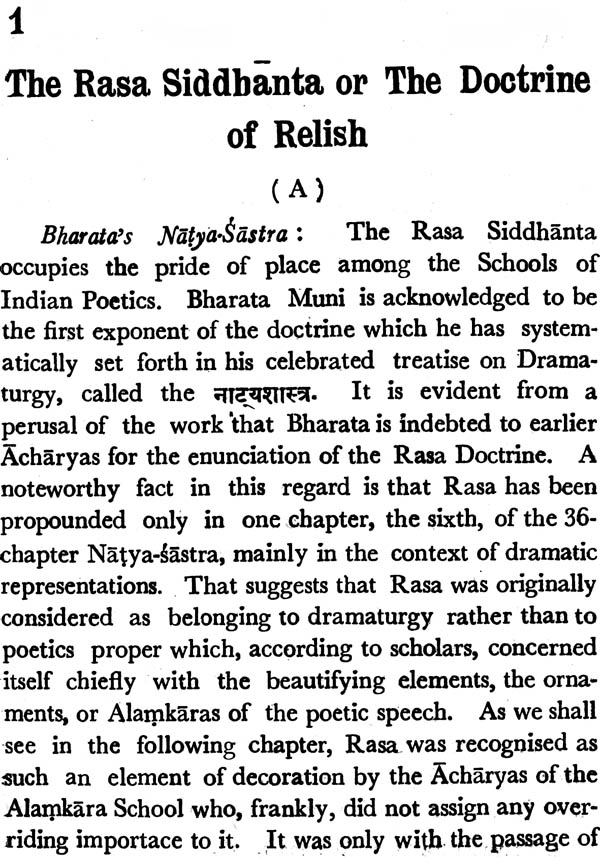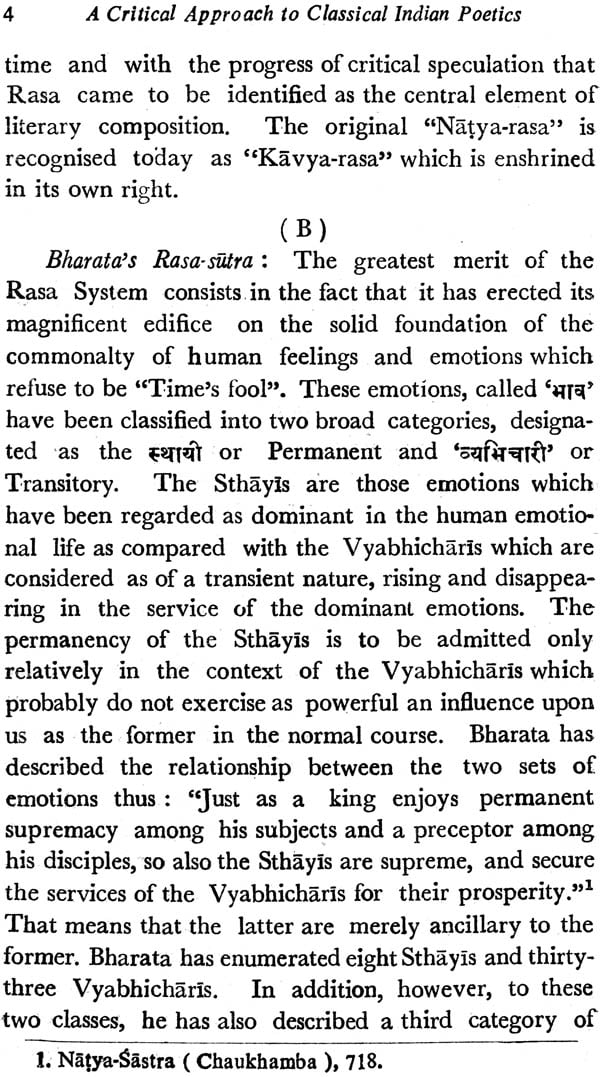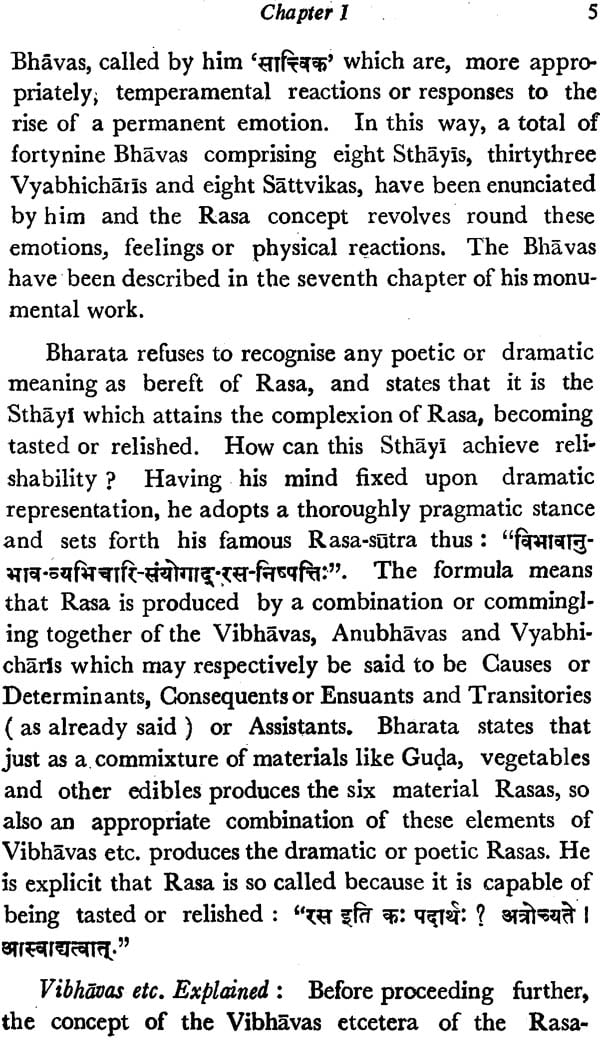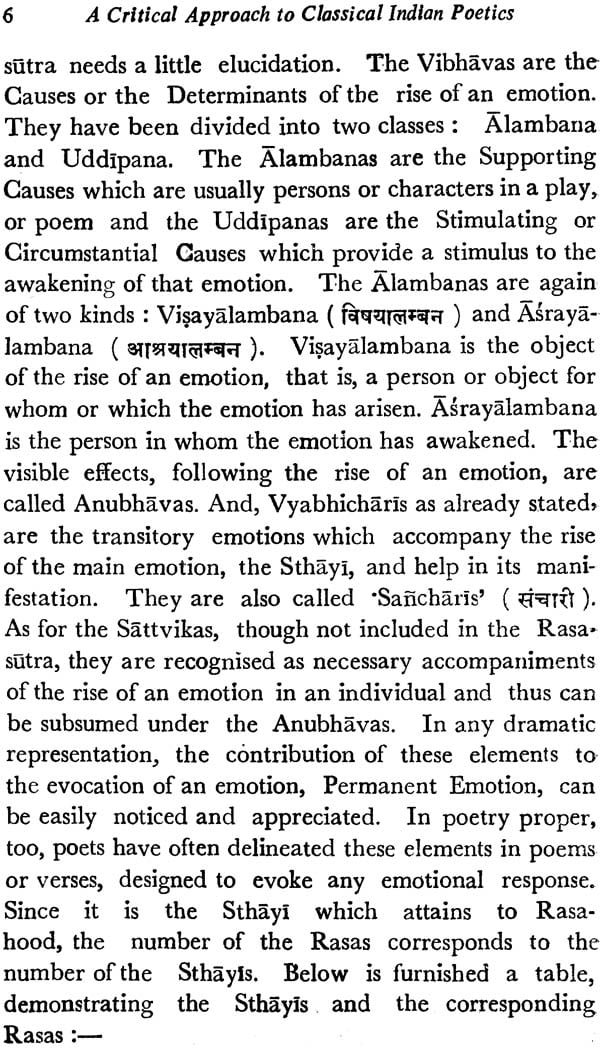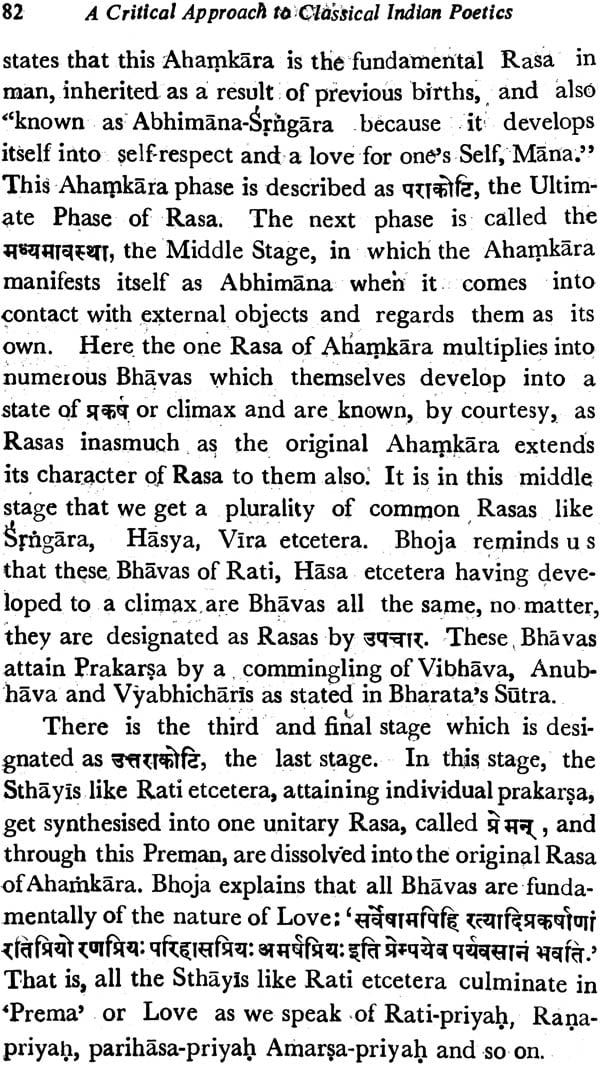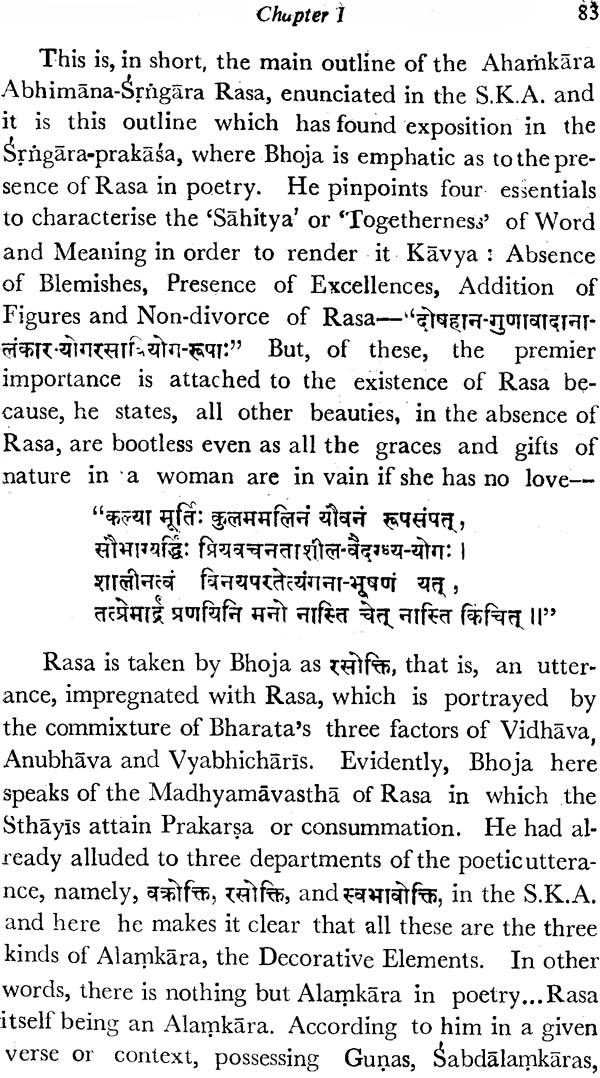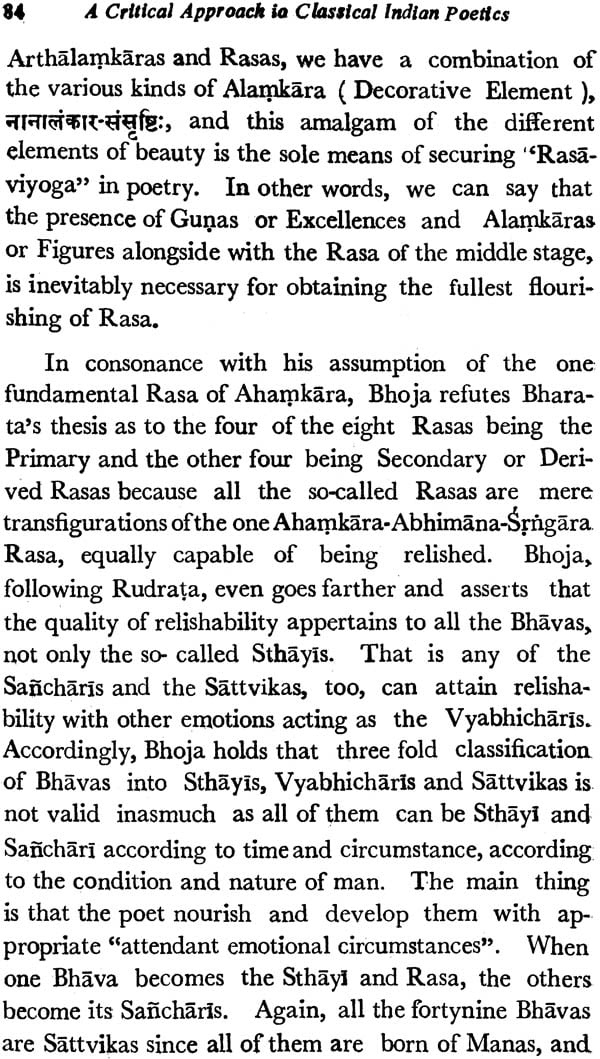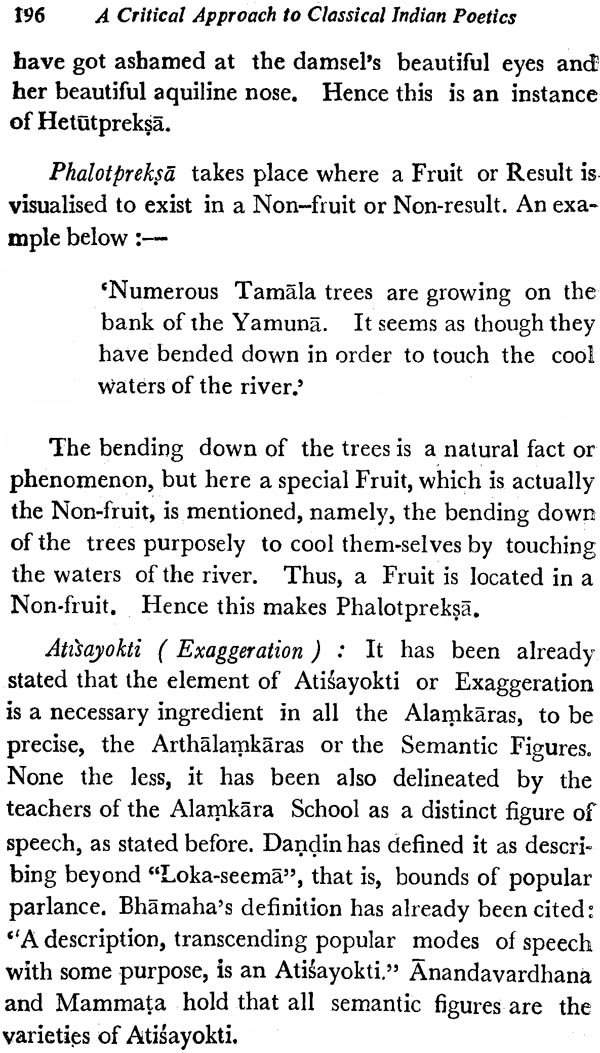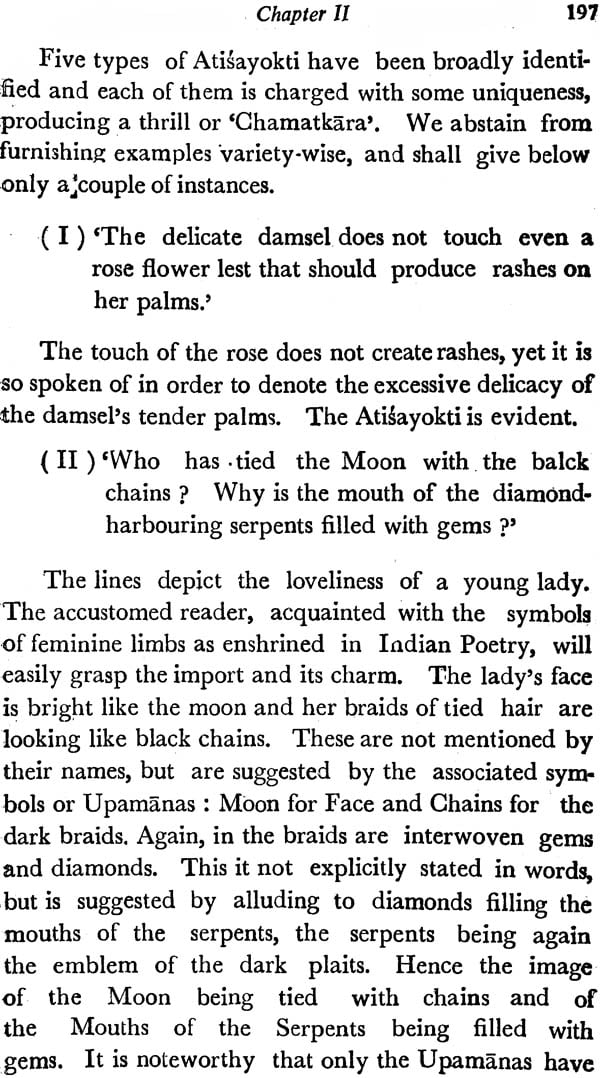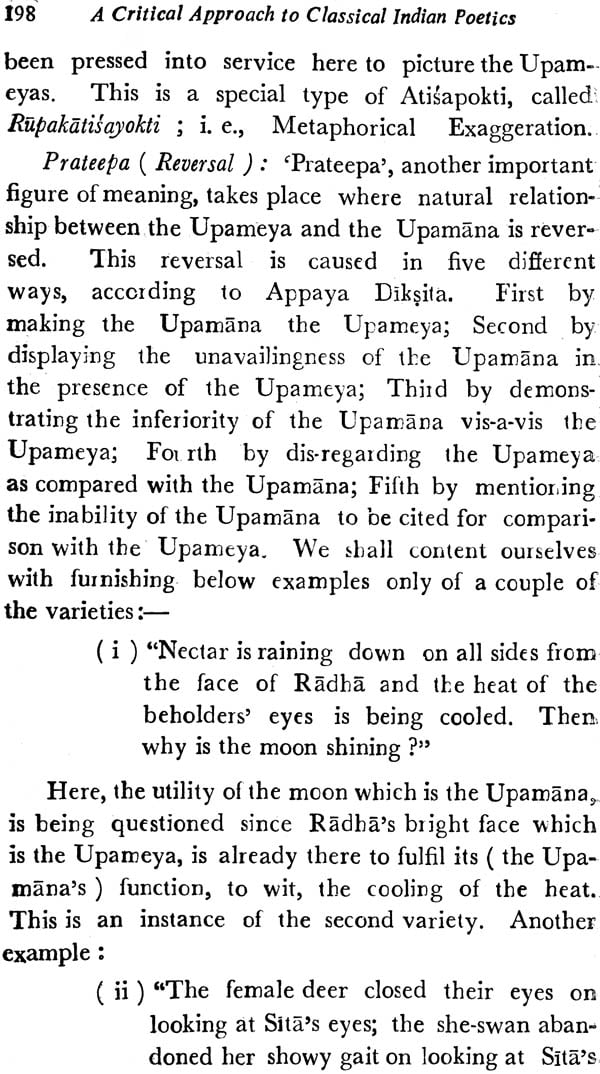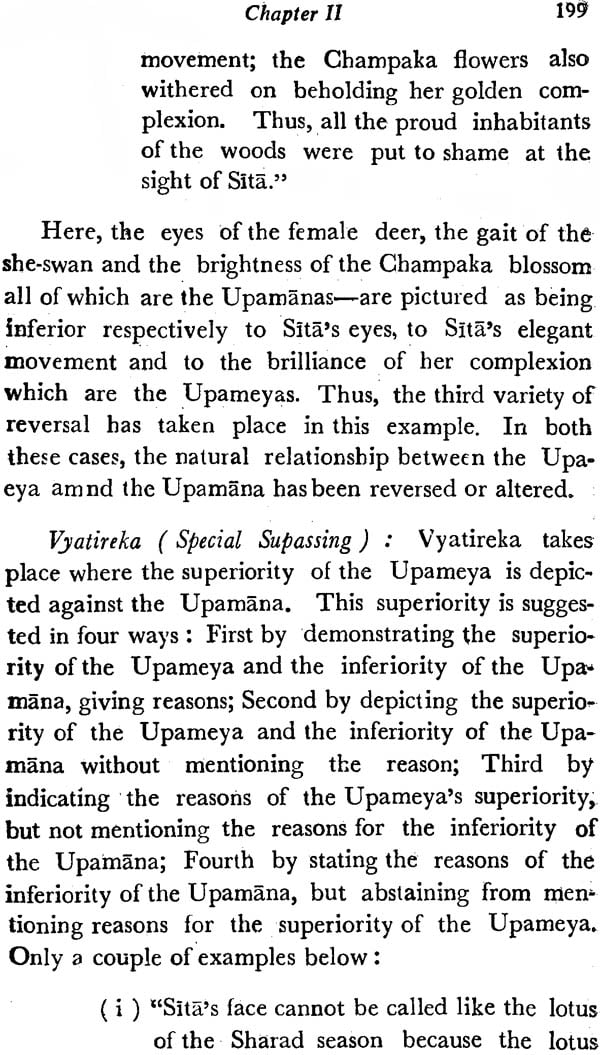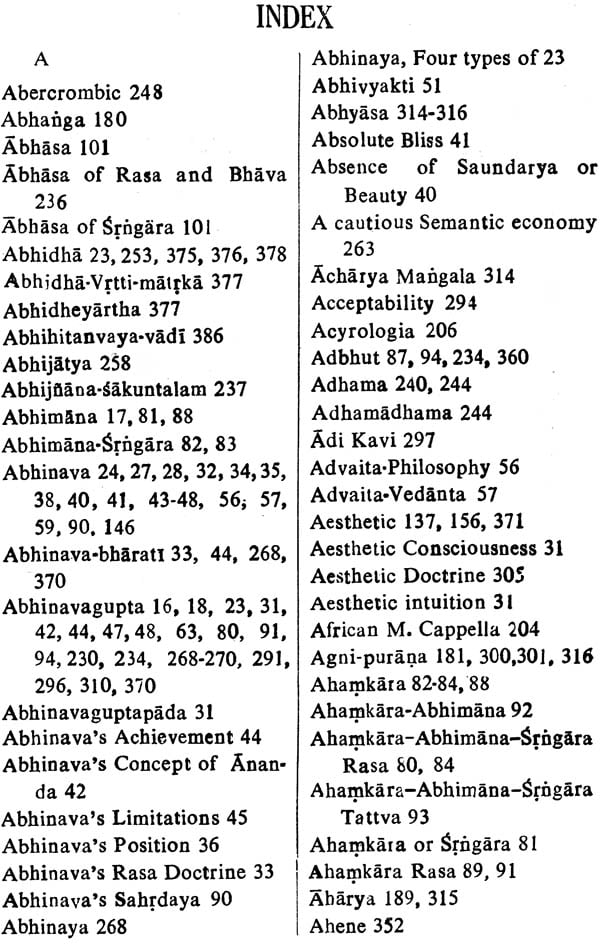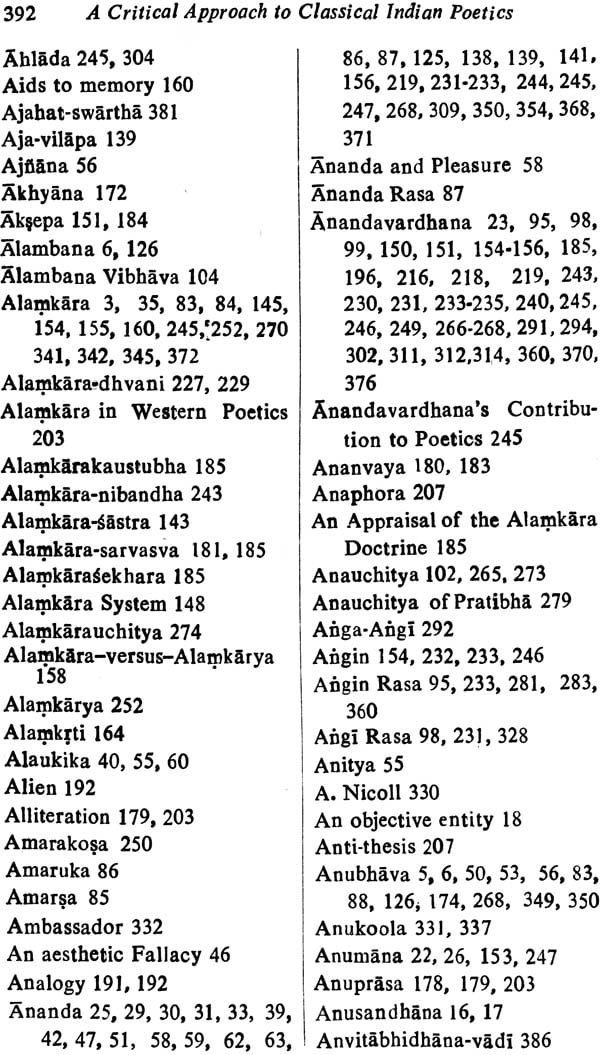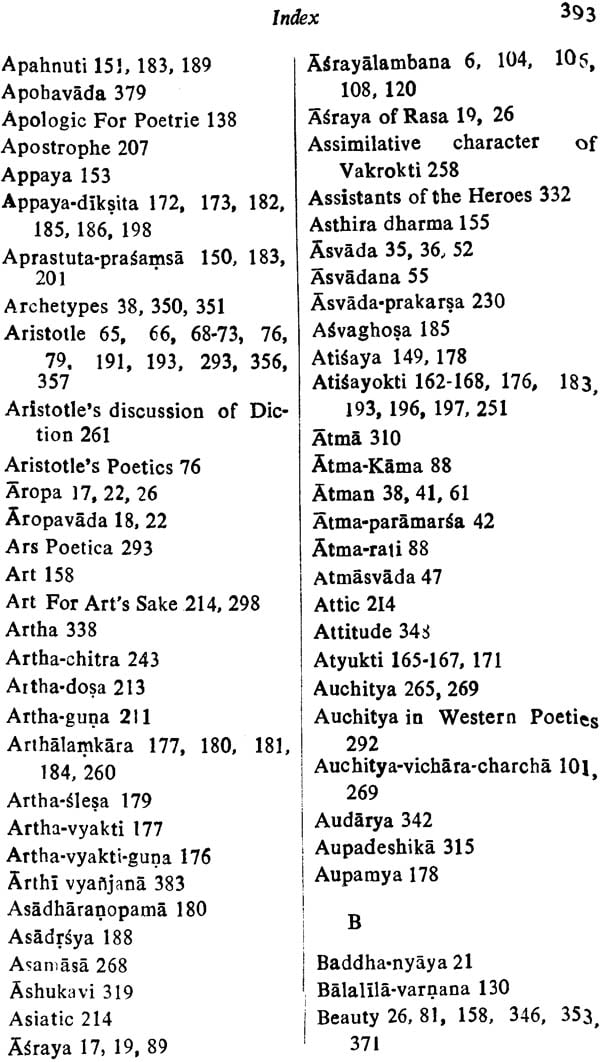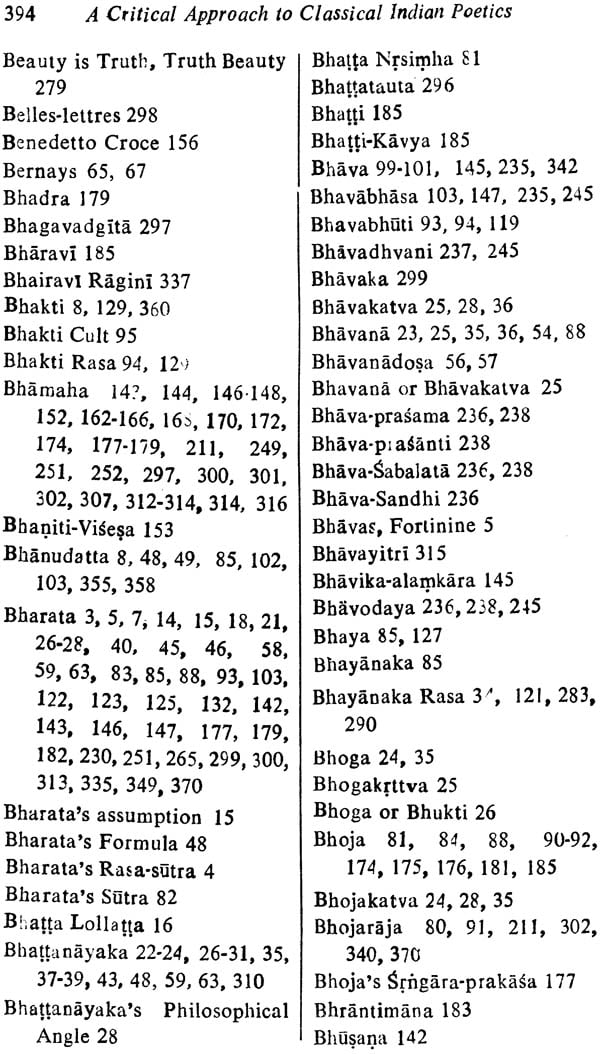
A Critical Approach to Classical Indian Poetics (An Old and Rare Book)
Book Specification
| Item Code: | NAD510 |
| Author: | Dr. R. S. Tiwary |
| Publisher: | CHAUKHAMBHA ORIENTALIA, Varanasi |
| Language: | English |
| Edition: | 1984 |
| Pages: | 437 |
| Cover: | Hardcover |
| Other Details | 8.5 inch X 5.5 inch |
| Weight | 500 gm |
Book Description
The book owes its origin to a series of lectures, delivered by me at three consecutive Seminars, organized by the Central Institute of English and Foreign Languages, Regional Centre, Lucknow, under the supervision of Dr. Janardan Thakur, a polished scholar, the then officer in-charge, in its earlier years, for the be hoof of the teachers of English, deputed by different universities and colleges of North India. The discourses were deeply appreciated and a desire was voiced by most of the participants that there should be a work on Classical Indian Poetics, worthy of commending itself to the students and teachers of English. I naturally felt encouraged and decided to compose a modest treatise, especially oriented to meeting the needs of the English- knowing audience. As I had been a teacher of English or nearly three decades, and had been also interested in the study of Sanskrit Poetics from original sources, I felt I could present the tenets of the different Systems of Indian Poetics in a language and a style which would readily commend itself to the students and teachers of English. That is the genesis of the present work.
I am aware of the two massive treatises on Ancient Indian Poetics by Dr. S. K. le and Dr. P. V. Kite, both e eminent scholars in the field of Sanskrit learning and research. I have had also the occasion of looking into some of the works of Dr. Righavan, notably, his monumental thesis, ‘Bhoja’s rngra-prakaa’. But, the books of the first two authors are Histories of Sanskrit Poetics while Dr. Raghavan’s treatise is mainly limited as it should have been to the exposition of the prince-optician’s literary doctrines. Histories are ‘histories’ and it will be difficult for the readers to find at one place a connected, coherent treatment of any School of Poetics inasmuch as the historians would devote their attention to tracing and describing the chronological development of Poetics down the ages rather than enunciating the principles in a systematic fashion at one stretch. Accordingly, neither of the two voluminous works of Dr. De and Dr. Kane bids fair to minister to the requirements of the students of Indian Poetics the majority of whom are interested in acquiring a knowledge of the basic essentials of Indian Poetics, and not an account of the growth and development thereof. I have also come across one or two books on the subject written in English by Sanskrit teachers in some of the universities. But, they have not attracted me, somehow or other.
The present book is no ‘history’ of Indian Poetics. It has been inspired with the object of presenting the doctrines of the Major Schools of our Ancient Poetics in a connected and cohesive manner, assuring that the readers come at the required material in one chapter together at a stretch. That is to say, splitting of the relevant discussion has been studiously eschewed, and the necessary connected account has been furnished at one place, in one continuation. That will definitely facilitate the acquisition of knowledge of the diverse systems in a trustworthy fashion. If there appears, however, a semblance of history anywhere in the book, that i only because the evolution of a particular system was sought to be delineated in a continuous way, in one chapter, in one context, for the benefit of the readers.
One specialty of the present work consists in the selection of illustrations. I have kept the interest of the English-knowing community of readers in my mind in this behalf. The illustrations have been borrowed both from the original Sanskrit texts, of course, mostly rendered into English, and also from English poets in some cases, mainly the popular ones. That will, I believe, stimulate an inspiration to examine English poems in the light of Sanskrit concepts, too.
A word about my own appreciation of the verses or poems of English poets, as scattered in the present work. Having taught English Poetry and Poetics to under-graduate and post-graduate students for a long time, I have come to feel that a sort of Academic or Intellectual Subordination on our part to the western scholars has characterized our approach to the teaching of English letters. This feeling has periodically disconcerted me. And, I am convinced our University teachers of English will derive sufficient impetus from a study of Indian Poetics to evaluate English works, unfettered and untrammeled by their traditional appreciative “cultures”. That way, they will make a distinct contribution. of their own to the enrichment of the huge critic cal corpus, already existing in the long tradition of literary speculation in the West.
Sufficient circumspection has been exercised by me for the protection of Accuracy and Authenticity in the discussion and enunciation of the different doctrines inasmuch as the original major treatises of the ancient Achryas have been uniformly made the basis. The sources being firsthand, the interpretations have been uniformly mine, of course, not ignoring the modern or present scholars, but never accepting their conclusions in a blind faith or fashion. Allusion to or discussion of hairsplitting distinctions or controversies among the Sanskrit exegetes has been deliberately avoided, except where absolutely necessary for the sake of clarifying some basic point or stance. That has, I feel, contributed a dimension of lucidity and definiteness to the discussions and enunciations.
I have, further, provided, towards the conclusion of each chapter, a succinct discussion of the similar or sister doctrines, available in western speculations, in order to pinpoint the virtual identity of approach between the master minds of old, all the world over. Furthermore, I have been actuated in this regard also by the desire to stimulate our readers to betake themselves to a deeper, simultaneous study of both the Oriental and Occidental systems of literary appraisement which will yield them a rich harvest of aesthetic pleasure.
Before closing this foreword, I deem it necessary to point out the scheme of transliteration (reproduction) of Sanskrit letters into Roman characters. Here I have followed, in the main, the internationally accepted mode of transliteration which is furnished below for instant reference.
It is now with an extreme sense of pleasure that I acknowledge the assistance, provided to me in the course of the preparation of the manuscript by my old talented pupil, Shri Shivaprasãd Dwivedi, M.A., Sahityadarshan charya, Head of the Darshana-vibhga, Shri Hanumat Sanskrit College, Ayodhya, by way of supplying me with some of the original works of the Sanskrit Achryas and also elucidating certain technical points of Sanskrit Grammar. I wish him all success in his life and career. Then, I cannot but recall, in this connation, the -valuable understanding and appreciation, extended me by my trusted old colleague, Professor Ranjeet Singh, Head of the Department of Psychology, K. S. Saket Postgraduate College, who also enlightened me on certain concepts of Psychology during my discussion of the Rasa Doctrine. My good wishes and gratitude go to him at this hour of the conclusion of my labours in the exploration of the rich treasure-trove of Indian Poetics. My sincere thanks are also due to Dr. Ram Shankar Tripathi and Dr. Radhika Prasad Tripathi of the Hindi Department of Saket College who have, from time to time, warmly appreciated my resolve to bring the project to a succestful conclusion. And, it will be an unpardonable ‘laux pas” on my part, should I fail to place on record my deep sense of appreciation of the willing cooperation, rendered me by Professor Lalit Mohan Pandeya and Professor Jagannath Tripathi, my old colleagues in the Department of English at the Saket College, who supplied me with some of the books of English poets and dramatists but for which, much necessary material might not have found its way into the present work.
In fine, I feel overwhelmed with sentiment when I remember how my daughter, Km. Malijul Rãn ‘Tripahi, Lecturer in Political Science at the L. 13. Shästri Postgraduate College, Gonda, Avadh University, and my prankish grand-daughter, Km. Pratyush-vatsalä, currentlyappearing at the Intermediate Final Arts Examination, apart from my daughter-in-law, Smt. Shyama Rani Tripah, have promoted an atmosphere in the family matrix, congenial to my literary pursuits, and have patiently endured my occasional rebukes and tantrums, mostly undeserved. My unstinted blessings go to them as gentle drops of rain fall down on earth from Heaven.
I would like now to place on record my sense of thankfulness to the proprietors of the Chaukhambha Orientalia who have undertaken the publication of this work in a spirit of sympathy and readiness, devoted as they are to the cause of furtherance of Oriental Learning and Letters.
| (1) | The Rosa Siddhãnta or the Doctrine of Relish | |
| Bharata’s Nya-astra:Bharata’s Rasasutra: Vibhvas ecetera Explained: Number of Rasas:The Sthyis : The Eight Sättvikas. The Thirtythree Vyabhichris: Constituents of Rasa Exemplified : Eliot’s Objective Correlative: Rasa Objective Entity : Bhata Lollata: kuka. Contribution of Louaa and añkuka. | 3-22 | |
| Bhaanayaka: Three Functions of word: Concept of Sdhrajikaraza : Boga or Bhojakatva: Araya of Rasa : Nursea of Rasa: Bhaanyaka’s Philosophical Angle: Bhaana yaka’s Contribution. | 22—31 | |
| Abhinavaguta: Fundamental Principles of aivism: Rasa Elucidation: Abhinava’s Position: Bhaanyaka and Abhinava: Further Elucidation of Abhinava : Abhinava’s Concept of Ananda: Poems fit for Rasa: Factors of Rasavighna: Abhinava’s Achievement: Abhinava’s Limitations. | 32—47 | |
| Posterior Theorists :Mammata Bhaa : Bhnudatta: Vishwantha: Relish of Rasa: Sdhärai dkrta or Generalisation and Vibhavas and Rasa Production: Pariditarja Jaganntha: Bhävandoa and Rasa: Summary of Rasa Discussion. | 47—58 | |
| The oncet of Ananda in Rasãnubhiti: Vishwantha’s Arguments: Arguments Exami-ned. | 58—63 | |
| Theory of Catharsis: Limitations of Kathar-sis. | 64—80 | |
| Bhojarãja’s Theory of AhaikJra-Abhimilfla rñgãra: Rasika and Sahrdaya: Criticism of Bhoja. | 89—92 | |
| Original Rasa : Angin Rasa: Rasabhasa: rñgära or The Erotic: Misrita | 92-103 | |
| Srngara Tennyson’s ‘Tithonos’ : The Karuia:Vra or The Heroic. Shnta or The Quietistic: Refe-rence to Bhakti Rasa: Hsya or The Comic: Comic emotion: | 103-133 | |
| Impersonalism in Rasa: Emotional Theory in Western Speculations : Limitations of Rasa: Awareness of Life, the end of poetry. | 134—141 | |
| (2) | The Alamkara Siddhartha or The Doctrine of Embellishment : | 142—161 |
| Poetics Proper: Bhämaha, the Earliest Expotient : Wide Conception of Alamkara: Alamkara and Rasa: Vamana and Alamkara:Kuntaka and Ruyyaka:Alamkara and Alamkarya: Croce’s Aesthetic: | 162—177 | |
| Värta and Kävya: Atisayokti and Vakrokti: Svabhvokti and Vakrokti: Vrt and Variiana: Bboja and Vakrokti-Svabhvokti. | 177—207 | |
| Classification of Alari’ikJras : Rudraa’s Classi fication: An Appraisal of the Alaipkara Doctrin:Upam (Simile): Rupaka (Metaphor): Metaphor in Western Poetics: Utprek : Aiayokti (Exactions ggeratiàn): Prateepa ( Reversal) : Vyatireka ( Special Surpassing ) : Difference between Vyatireka and Prateepa: Sarnasoki ( Special Describing): Aprastutapraansa (Round-about’ Description) : Paryyokti (Periphrasis): Alaip kära in Western Poetics. | ||
| (3) | The Ritis Siddhãnta or the Doctrine of style: | |
| Meaning of Rid: Division of Riti : Ridand Guixas: Doas: The Concept of Rid in Western Poetics. | 209—215 | |
| (4) | The Dhoani Siddhänta or The Doctrine of Suggestion: | |
| Anandavardhana : Three-fold Division of Meaning: Dhvani Defined: Dhvani Classified: Vastu-sambhavi: Kavi -Praudhokti-matrasiddha: Svatah-sambhavi: Alamkara-dhavani:Asamlaksya-krama-vyangya-Rasdhvani: Rasadhyani Defined: Factors of Rasa-Bhanga: Friendly and Hostile Rasas:Rasa -Bhanga: Frified: Rasa-dhvani Divided: Classification of Kavya: Gunibhuta-vyangya: Chitra-Kavya: Contribution ot Poetics: Anandavardhana's Dhvani in Western Specualtions: Complicated Formulations. | 216-250 | |
| (5) | The Vakrohti Siddhdnta or The :Doctrine of Ingenuity: | |
| Vakrokti,A new Trail : Vakrokti Defined: Vakrokti Classified : Margas and Guiias in Vakrokti : Assimilative Character of Vakrokti: Vakrokti in Western Poetics. | 251—264 | |
| (6) | The Auchitya Siddhanta or The Doctrine of Propriety: | |
| Concept of Auchitya in Earlier Writers Kemendra : Jivita or Life of Kvya: Kavpn-gas or Limbs of Poetry : Illustrations : Kemen dra’s Contribution : Auchitya in Western Poetics. | 265—295 | |
| (7) | Poetic Miscellany: | |
| The Conception of Poet: Difinition of Poetry: Purposes of Poetry: Soul of Poetry: Factors of Poetry: Frontiers of Poetic Meaning: Poetic Instruction : | 296—321 | |
| (8) | Major Canons of Dramaturgy: | |
| Broad Laws of Plot-Cunstruction: Cate gories of Kvya: Three Kinds of Plot: Consti tuents of Plot: Stages of Plot: Junctures of Plot: Nyakas or Heroes: Characteristics and Categories: Shobhä or Beauty of Character: Madhurya or Sweetness: Dhairy or Steadfast ness: Gambhirya or Mental Equilibrium : Tejas or Brilliance : Lalitya or Affability : Audarya or Magnanimity: Vilãsa or Vivacity: Other Classes of Heroes : Nyiks or Heroines : Classifications and Characteristics: | 322—345 | |
| (9) | Richards’s Theory of Value arid the Rasa’ Doctrine | 346—369 |
| (10) | Conclusions | 370—373 |
| Appendix | ||
| Shabda-shakti or Powers of word: Sphoa: Dhvani : Powers of word : Abhidhä : Lakaiia: Prayojanavatl Lakaia : Vyaijana: Tatparya | ||
| Vritti. | 374—386 | |
| Bibliography | 387—390 | |
| Index | 391—416 |
